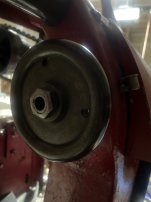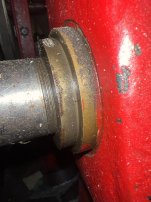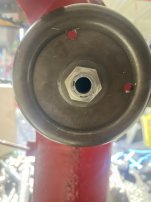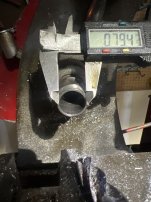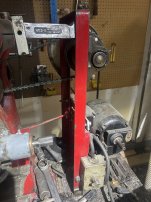So... Look at the back of the spindle. There may be a bolt head, or similar there which tightens a drawbar. It should unscrew, and will probably let you remove the large knurled item, probably leaving a flat end of spindle with a hole in it. The hole is probably tapered.
The nature of the hole, and what fits it is what needs to be known. Might be a B&S taper, might be a Morse taper like my horizontal. Or maybe something else.
The knurled item (chuck) is an add-on that fits the hole in the spindle. The taper of the spindle is the basic taer you need to match. With that known, all sorts of collets and adapters can likely be used. No need to match whatever the oddball collet you have is.
Getting the knurled part released from the tapered hole will probably need the drawbar unscrewed a bit, and then some controlled "tunking" on the end of the drawbar to pop the taper loose so it can be unscrewed the rest of the way from the drawbar, and pulled out.
The nature of the hole, and what fits it is what needs to be known. Might be a B&S taper, might be a Morse taper like my horizontal. Or maybe something else.
The knurled item (chuck) is an add-on that fits the hole in the spindle. The taper of the spindle is the basic taer you need to match. With that known, all sorts of collets and adapters can likely be used. No need to match whatever the oddball collet you have is.
Getting the knurled part released from the tapered hole will probably need the drawbar unscrewed a bit, and then some controlled "tunking" on the end of the drawbar to pop the taper loose so it can be unscrewed the rest of the way from the drawbar, and pulled out.


